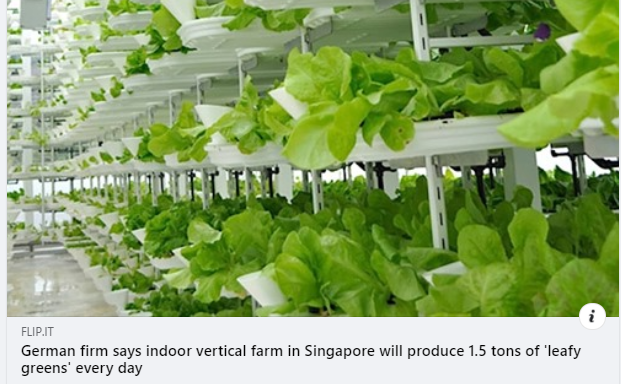Aeroponic Farming

I first ran across aeroponic (vertical) farming about the time I met Bill, perhaps 12 years ago, and I have to admit that my first reaction to it was extremely negative. I mocked the guy who first presented the idea: “You have a perfectly good sun in the sky and nutrient-rich soil, and you’re going to grow massive amounts of product indoors?”
I don’t think anyone’s done a complete breakdown on this concept, but it makes much more sense than might appear on first look. Here are a few things to consider:
• With vertical farming, you’re getting rid of most of the cost of plowing, planting, fertilizing, harvesting, and distributing produce to far-away places, some of which are on other continents; food is grown very close to where it’s eaten.
• There are no diesel tractors and combines spewing pollution into the skies.
• There are no droughts and floods.
• The cost of water in irrigation is virtually zero, which due to the dreaded “water-energy nexus,” means far less electricity is consumed in purifying and pumping.
• The precisely correct balance of nutrients are added.
• Very little of the energy that goes into fertilizer is wasted, and there is no runoff into our waterways to cause algal blooms.
• The light energy used to grow the plants is the precisely correct part of the electromagnetic spectrum.
• Plants grows faster because the “sun” is shining 24/7 (or whatever’s optimum).
• Society has the potential to rid itself of food deserts, as these “farms” can exist anywhere.
Like so many things, aeroponics really delivers when we put a price on carbon. The moment the producers and consumers of gasoline, diesel and electrical energy have to pay for the true costs associated with their use, a head of lettuce grown conventionally immediately doubles or triples in price, and becomes extremely unattractive on the market.
